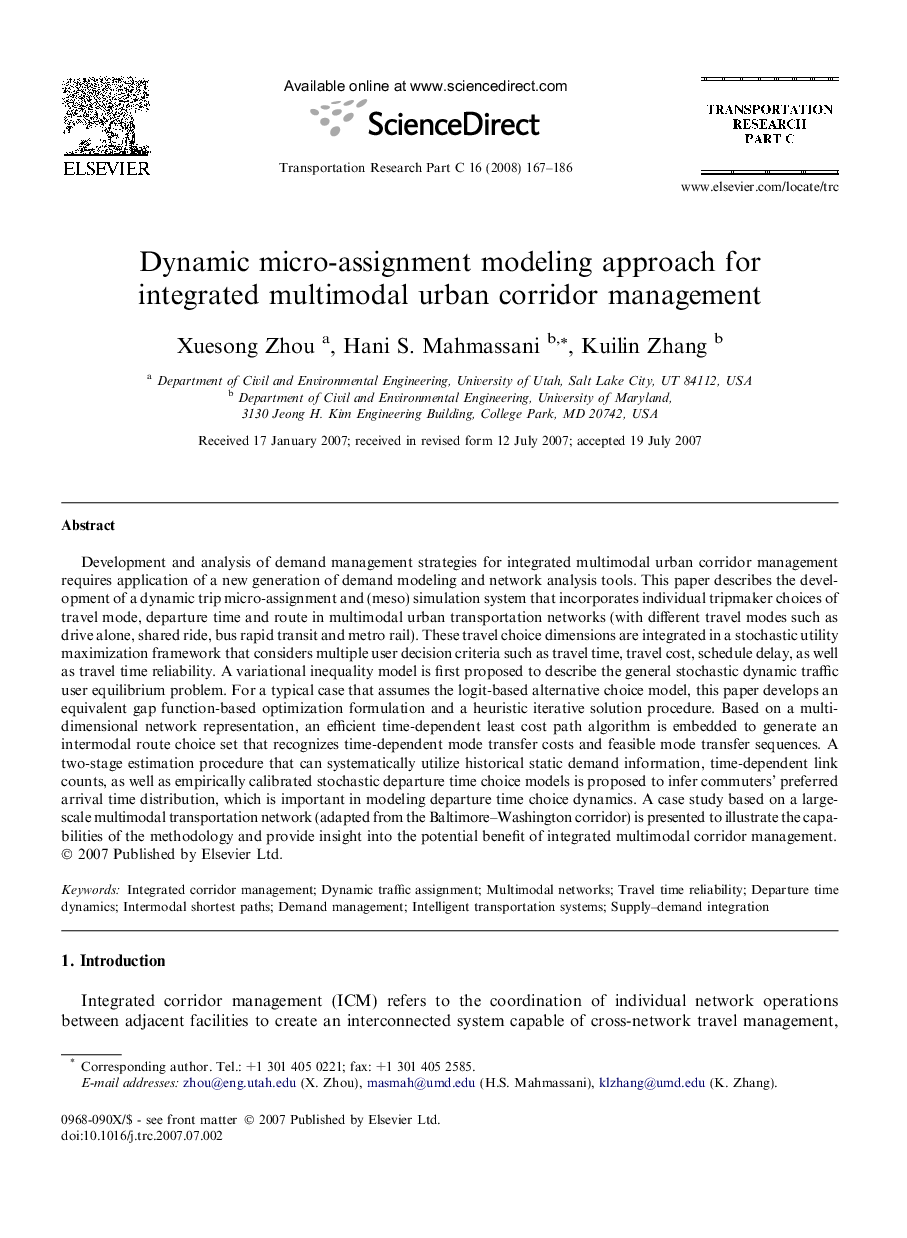| کد مقاله | کد نشریه | سال انتشار | مقاله انگلیسی | نسخه تمام متن |
|---|---|---|---|---|
| 526686 | 869192 | 2008 | 20 صفحه PDF | دانلود رایگان |

Development and analysis of demand management strategies for integrated multimodal urban corridor management requires application of a new generation of demand modeling and network analysis tools. This paper describes the development of a dynamic trip micro-assignment and (meso) simulation system that incorporates individual tripmaker choices of travel mode, departure time and route in multimodal urban transportation networks (with different travel modes such as drive alone, shared ride, bus rapid transit and metro rail). These travel choice dimensions are integrated in a stochastic utility maximization framework that considers multiple user decision criteria such as travel time, travel cost, schedule delay, as well as travel time reliability. A variational inequality model is first proposed to describe the general stochastic dynamic traffic user equilibrium problem. For a typical case that assumes the logit-based alternative choice model, this paper develops an equivalent gap function-based optimization formulation and a heuristic iterative solution procedure. Based on a multi-dimensional network representation, an efficient time-dependent least cost path algorithm is embedded to generate an intermodal route choice set that recognizes time-dependent mode transfer costs and feasible mode transfer sequences. A two-stage estimation procedure that can systematically utilize historical static demand information, time-dependent link counts, as well as empirically calibrated stochastic departure time choice models is proposed to infer commuters’ preferred arrival time distribution, which is important in modeling departure time choice dynamics. A case study based on a large-scale multimodal transportation network (adapted from the Baltimore–Washington corridor) is presented to illustrate the capabilities of the methodology and provide insight into the potential benefit of integrated multimodal corridor management.
Journal: Transportation Research Part C: Emerging Technologies - Volume 16, Issue 2, April 2008, Pages 167–186